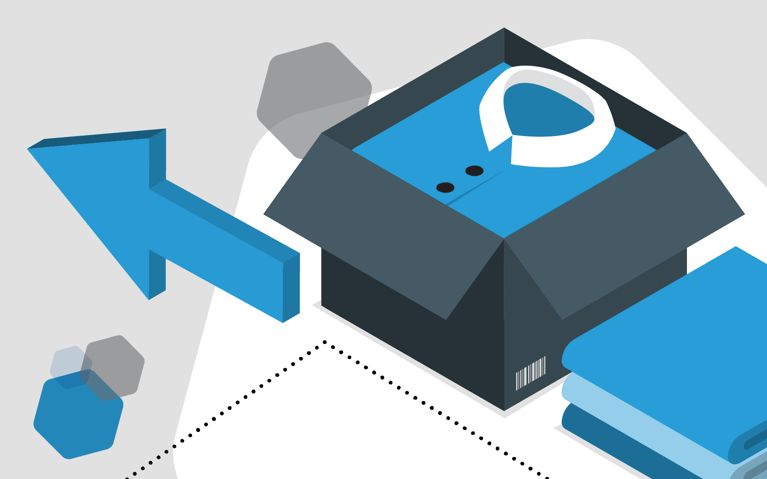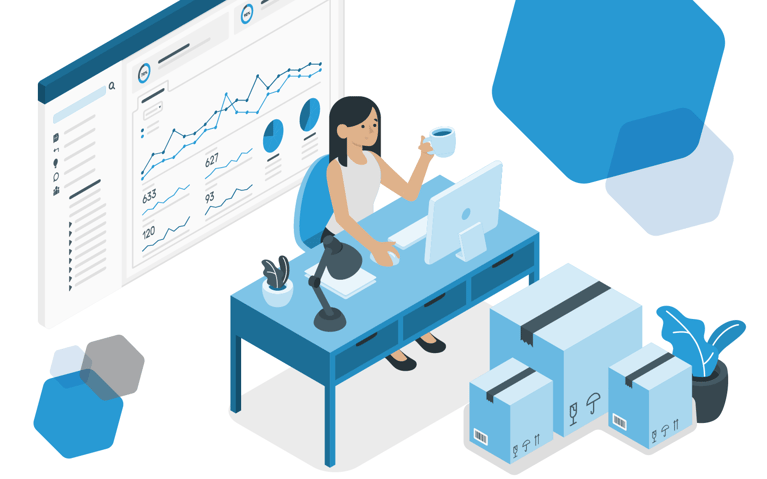Order fulfillment in ecommerce is a critical stage for consumers. As the final part of the customer journey, the process of picking and packing, shipping, delivery and unboxing leaves a lasting impression. One element that brands must consider is packaging. It affects the customer experience in multiple ways: The ability to deliver damage-free products, create a brand connection and delight the senses. However, packaging also impacts businesses. Packaging materials and shipping operations influence costs and brand reputation, meaning merchants must achieve cost-effectiveness while offering a stellar experience.
Why is packaging important in ecommerce and fulfillment?
Retailers have learned that packaging plays many roles. It can increase the overall shipping cost or create an engaging and exciting moment. It can generate brand awareness or affect profitability. It can even shape a consumer’s perception of the shopping experience or brand. In other words, packaging is crucial to ecommerce and fulfillment for several reasons:
- Protection: Packaging ensures that products reach customers in perfect condition. It shields items from damage during transit, reducing the likelihood of returns or refunds due to damaged goods.
- Branding: Packaging serves as a tangible representation of your brand. It communicates your brand identity, values and personality to customers. Well-designed packaging can leave a lasting impression and differentiate your brand from competitors.
- Customer Experience: Unboxing has become an integral part of the customer experience. Thoughtfully designed packaging enhances the excitement and delight of receiving a product, fostering positive feelings toward your brand.
- Sustainability: With increasing environmental awareness, eco-friendly packaging has become a significant consideration for consumers. Sustainable packaging not only reduces environmental impact but also appeals to environmentally conscious customers.
- Logistics and efficiency: Efficient packaging design can optimize shipping and storage space, reducing shipping costs and environmental footprint. It also streamlines logistics operations, helping streamline the supply chain.
- Security: Secure packaging deters tampering and theft, reassuring both customers and retailers. This is particularly important for high-value or sensitive items.
What packaging experience do customers want?
Customers are looking for a packaging experience that goes beyond just protecting the product. For example, sustainability is a key concern for some consumers, driving the demand for environmentally friendly packaging options. Customers prioritize materials that are recyclable, biodegradable or sourced from sustainable origins. Additionally, minimalistic packaging designs that minimize waste are preferred by eco-conscious shoppers, reflecting their commitment to reducing environmental impact. It's also a way for buyers to see a brand's commitment to their mission.
Another element consumers may seek is personalization. When brands add a personalized touch to the packaging experience, it creates a more memorable moment for the customer. This might include handwritten or signed notes, tailored designs or incorporating the customer's name to enhance the emotional connection between the brand and the consumer. By catering to individual preferences, personalized packaging demonstrates a brand's attentiveness and fosters customer loyalty.
The unboxing experience has evolved into a significant aspect of customer satisfaction. Consumers are drawn to visually appealing packaging that incorporates high-quality materials and decorative additions. An enjoyable unboxing process, facilitated by interactive features or thoughtful design choices, enhances the overall customer experience. Packaging that prioritizes convenience, informational value, branding cohesion and security further contributes to customer satisfaction and loyalty.
Consumer desires by the numbers
Ecommerce businesses can look at the numbers from a recent survey to see packaging’s importance:
- 41% of consumers reported that branded packaging encourages them to purchase again
- Customer loyalty can increase as much as 40% when packaging includes personalization
- 27% of consumers won’t purchase from a retailer if their packaging isn’t sustainable
- 61% of consumers are more excited by the arrival of a branded package
What are the most common packaging materials used today?
The most common packaging materials used today vary depending on factors such as product type, industry and environmental considerations. However, some of the most prevalent packaging materials include:
Cardboard
Cardboard is widely used for shipping boxes, cartons and packaging inserts. It is lightweight, durable and recyclable, making it a popular choice for packaging various products. Cardboard's sturdy nature makes it effective protection for various products during shipping. Its versatility allows for customization to fit different shapes and sizes.
Plastic
Despite concerns about its environmental impact, plastic remains a commonly used packaging material due to its versatility, affordability and durability. Plastic packaging can be found in the form of containers, bags and protective wraps. Plastic is appealing as it is lightweight and can reduce shipping costs.
Paper
Paper is used for a variety of packaging applications, including bags, envelopes, wrapping paper, and labels. It is renewable, recyclable and biodegradable, making it a sustainable option for many businesses. Paper can also be printed or customized to include appealing visual elements.
Biodegradable and compostable materials
Consumers and businesses concerned about plastic pollution often use biodegradable and compostable packaging materials derived from renewable sources such as plant-based plastics, paperboard and biodegradable films. Common biodegradable and compostable shipping packages include those made from materials like recycled cardboard, paper, cornstarch-based bioplastics and plant-based fibers, which break down naturally over time, reducing environmental impact.
Foam
Foam packaging, such as expanded polystyrene (EPS) and polyethylene foam, cushions fragile items during shipping. While not always eco-friendly, foam packing materials are still beneficial due to their superior cushioning, versatility and lightweight nature, which help protect fragile items during transit while minimizing shipping costs. Some types of foam, like EPS, provide thermal insulation, making them suitable for temperature-sensitive products. Despite environmental concerns, businesses can opt for reusable and recyclable foam alternatives to mitigate their ecological impact while still benefiting from the practical advantages of foam packaging.
Textiles
Textile packaging, such as cloth bags and pouches, is gaining popularity as a reusable and sustainable alternative to traditional single-use packaging materials. It’s a great way for a brand to create additional awareness. It may attract attention when used by the purchaser for other purposes.
Packaging material and design best practices
Customer expect fast and free shipping – and 77% of consumers have abandoned a purchase because of unsatisfactory shipping options. Combined with the desire for a premium delivery and unboxing experience, and its essential for omnichannel businesses to strategize their packaging. Here are steps you can take to prevent damage, reduce costs and delight customers.
Select packaging that protects products
Think about several factors to effectively protect your products, such as the fragility of the item and shipping method. Begin by assessing the specific requirements of the product, including its size, weight and susceptibility to damage. Choose packaging materials and designs that provide adequate cushioning, support and insulation to minimize the risk of breakage or deformation during transit.
Optimize packaging to reduce shipping costs
The cost to ship a package can significantly affect your bottom line, making it critical to optimize your packaging. Use packaging materials that are lightweight yet durable, such as corrugated cardboard or lightweight plastics. Choose packaging designs that minimize empty space and maximize product density within shipping containers, reducing the overall volume and weight of shipments. Invest in packaging that can be stacked or nested efficiently to maximize space utilization in shipping trucks or containers, minimizing the number of shipments needed. Consider investing in custom packaging solutions tailored to the dimensions of your products to further reduce wasted space and shipping expenses. Lastly, regularly review and optimize packaging practices based on shipping volume, product characteristics and feedback from carriers to continuously improve efficiency and reduce costs.
Brand your ecommerce packaging
Ecommerce businesses can use one or more features to brand their packages. Some of the best packaging design ideas include:
- Customized box designs: Create unique box designs featuring your brand logo, colors and imagery that reflect your brand identity. Consider incorporating eye-catching graphics, catchy phrases or patterns that make your packaging stand out and reinforce brand recognition.
- Personalized thank-you notes: Include handwritten thank-you notes or printed cards with personalized messages to express gratitude to customers for their purchase. This personal touch adds a human touch to your packaging and strengthens the connection between your brand and customers.
- Branded packaging tape: Use custom branded packaging tape with your logo or a slogan to seal your shipping boxes. This secures the package and also serves as an additional branding opportunity that enhances brand visibility during transit.
- Stickers, seals or labels: Design branded stickers or labels that can be affixed to your packaging, showcasing your logo, social media handles or promotional messages, or to add a decorative element to boxes and envelopes. These stickers can also encourage customers to share their unboxing experiences on social media, further amplifying your brand reach.
- Unique inserts or freebies: Include branded inserts, such as product catalogs, discount codes or small freebies like stickers or samples, inside your packages. These value-added items enhance the unboxing experience and leave a lasting impression on customers.
- Interactive packaging: Incorporate interactive elements into your packaging, such as QR codes linking to exclusive content or instructional videos related to your products. This engages customers and encourages them to interact further with your brand beyond the initial purchase.
- Branded tissue paper: Wrap products in branded tissue paper featuring your logo or patterns that reflect your brand aesthetic. This adds a layer of sophistication and enhances the perceived value of the product.
- Promotional inserts: Include promotional inserts or flyers inside the package, highlighting upcoming sales, new product launches or loyalty programs. This helps drive repeat purchases and encourages customers to engage further with your brand.
Using an omnichannel 3PL fulfillment expert for exceptional post-purchase experiences
Maximize customer satisfaction and loyalty by partnering with Cart.com for frictionless omnichannel fulfillment. Streamline your post-purchase process and deliver exceptional experiences across all channels seamlessly. With our expertise in omnichannel logistics, we ensure timely order fulfillment, accurate inventory management, efficient picking, packing and shipping, enhancing customer satisfaction and retention. Let us handle the complexities of order fulfillment while you focus on growing your business and delighting customers. Elevate your brand's reputation and drive repeat sales with a trusted partner committed to delivering excellence from discovery to delivery. Contact our team today for more information.
About the Author

Alyssa Wolfe
Alyssa, a seasoned Digital Marketing Specialist with over 14 years of expertise, excels in project management, strategic development, and content creation. With a proven track record in crafting and executing successful online campaigns, she brings a wealth of knowledge in SEO, social media strategy, and data analytics.
Read Full BioSubscribe to our emails for the latest industry insights!
By entering your email, you agree to receive marketing emails from Cart.com






